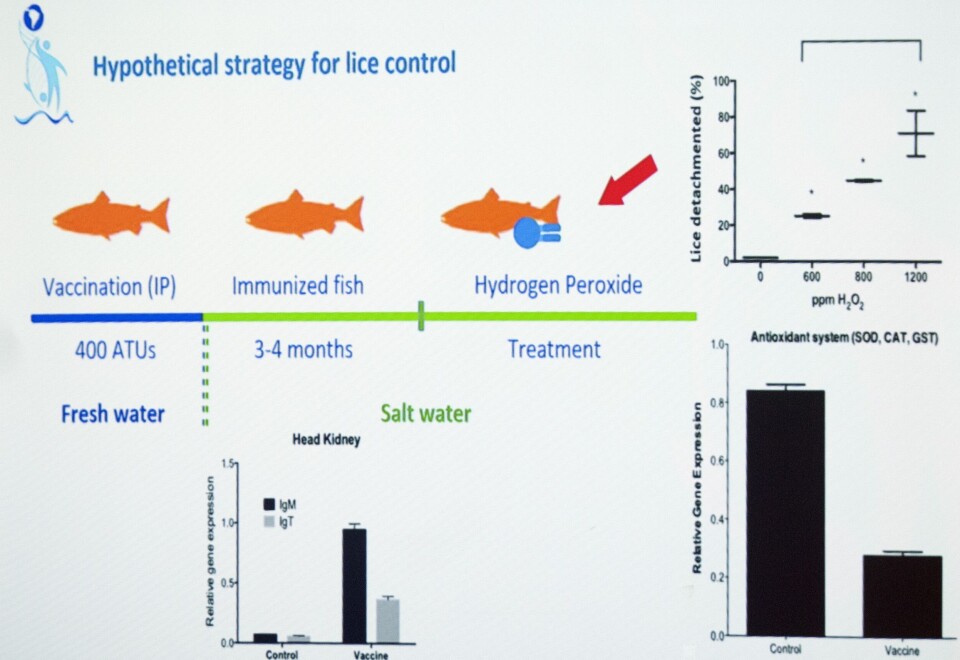
Vaccine cuts lice loads by 97% in lab tests
Chilean researchers have created a vaccine against sea lice that, in laboratory tests, has shown promising results, reducing the volume of lice by 97%.
Soon they hope to test it in farm conditions.
Dr Cristian Gallardo-Escárate presented the experimental results he has obtained with the development of a recombinant vaccine against the Chilean sea louse, Caligus rogercresseyi, during last week’s Sea Lice 2018 conference in Punta Arenas.
Reverse or recombinant vaccination is a relatively new technology in which the antigens of potential vaccines can be found significantly faster than by traditional methods.

Gene sequencing
With traditional technology, it can take between up to 15-20 years to develop a completely new vaccine against a given virus or bacteria, however, these new biotechnological tools can reduce this time to only a few years.
Nowadays, genomic sequencing has allowed researchers to use computer programs to identify each protein produced by an organism and to predict to some extent whether the protein has the potential to be an effective vaccine antigen.
During the antigen selection process, data analysis can be used to detect whether the protein is involved in the survival of microorganisms or infections and whether similar proteins have been used in other vaccines.
Living organism
Until now, most fish vaccines have used inactivated organisms that are injected into specimens while waiting for them to generate an immune response. However, the dead organism does not produce the same response as the living organism, which is evident because it is not active. “This means that vaccines are often ineffective and do not last long,” explained Gallardo-Escárate.
This is precisely what Gallardo-Escárate and a research group at the Research Center for Aquaculture INCAR, at the University of Concepcion, have done.
20 individuals of C. rogercresseyi were gene sequenced and based on this, the scientists looked for RNA sequences that were expressed when the lice had infected a salmon. Some of these “candidates” were then used to make a recombinant vaccine that was then injected into salmon.
The Chilean drug company Pharmacological and Aquacultura Veterinaria (FAV SA) is also working on this issue. It showed data from a vaccine that had given about 50% reduction in the number of lice on salmon vaccinated with a test vaccine in the lab.
Gallardo-Escárate, explained that, in laboratory tests with animals in tanks, the vaccine had reduced the volume of lice by 97%, 25 days after infection.
“The transcriptional analysis in lice showed that the key gene associated with the development and reproduction of the lice was strongly regulated downwards in response to the vaccine,” he explained.
A vaccine for L. salmonis
Gallardo-Escárate thinks that, if this vaccine gets to have commercial applications, it could mean a new way of thinking about the protection against Caligus.
“The fish are vaccinated intraperitoneally in fresh water. After its release to the sea, the protection of the vaccine will last between three and four months. Then, we can treat the fish with hydrogen peroxide since the surviving parasite is much more sensitive to oxidative stress than normal,” he said.
The expert also pointed out that, if the vaccine shows favourable results in the field, it could serve to create a vaccine against Lepeophtheirus salmonis, the sea lice that affects salmonids in the northern hemisphere.























































